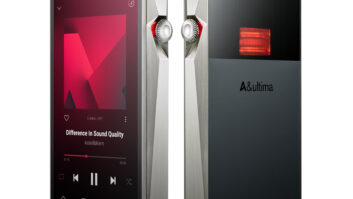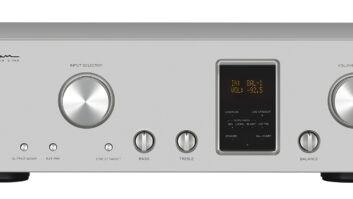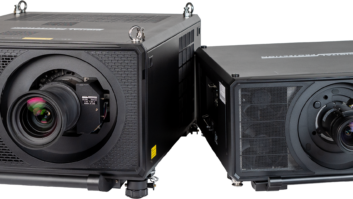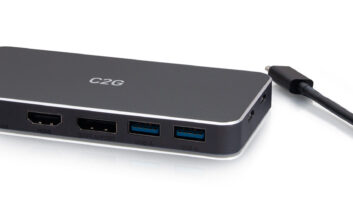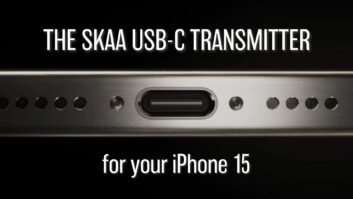You know those optical illusions that look like one thing until you shift your perspective ever so slightly? Like the gigantic skull that’s really a Victorian lady peering into a vanity mirror, or the old gypsy hag that’s really a coy young lass shyly avoiding your gaze? NAD’s C 446 is a lot like that.

Above: NAD’s C 446 Digital Media Player offers networking of digital formats, such as MP3, FLAC, WMA, WAV, and AAC.
Left: Additional features of NAD’s C 446 include USB playback, Wi-Fi, a userfriendly internet radio portal, support for cloud music services, such as Last.fm, and an RS-232 serial interface port.
Not that a wrinkled crone or a big evil-looking cranium is the most apt metaphor for this beautiful media streamer. In fact, the first thing you notice about it is the clean, refined aesthetic. It’s a classy looking device that shines above most of its media streaming brethren in the build-quality department. For all that, though, after hooking up this beautiful streamer, I couldn’t help but look at it and wonder why someone in the market for the C 446 wouldn’t just buy an Apple TV instead. There’s no onscreen interface here (no video output at all, in fact.) It does have a very nice AM/FM tuner built in, but as for control, there isn’t an app for that. And it costs $800.

So why would anyone want this instead of an Apple TV? I don’t think anyone would. But that’s kind of the point. Instead of looking at the C 446 as a high-class device for the digitally hip audiophile, view it instead as an RS-232- controlled radio tuner with music streaming built in to hook the more mature crowd that wouldn’t have considered an Apple TV to begin with, and suddenly it snaps into focus as a more enticing purchase for the right demographic.
Initial setup, it should be noted, is incredibly simple. After connecting the optical out to my Anthem D2v processor, attaching the included high-quality FM antenna, and plugging a network cable into the Ethernet port, I turned on the power and was shocked–honestly shocked–to hear the Beatles streaming over internet radio with no further effort on my part. With a single press of a button, I was listening to local radio stations streaming over the ’net. Another button press, and I was browsing the local airwaves with fantastic reception (although without the benefit of HD radio reception, which is a bummer, especially because the C 446 supports DAB+ broadcasts for those parts of the world with access).
Just for giggles, I tried the included Wi-Fi antenna too and found wireless setup to be leaps and bounds easier than similar devices. I was also pleased to find that going wireless didn’t hamper performance at all. I nonetheless switched back to a hard-wired connection soon after, if only for my own peace of mind. (Okay, mostly for the fact that its wireless capabilities extend to 802.11/b/g only, the lack of 802.11n is curious at first, but makes a little more sense when you consider the C 446’s streaming limitations, which we’ll cover in a bit).
Integrating the music collection from my main PC was as snappy as the initial setup. In addition to all the internet and terrestrial radio functionality, as well as Last.fm integration and compatibility with NAD’s sold-separately IPD 2 iPod dock, the C 446 supports UPnP (Universal Plug and Play) and accepts AAC, MP3, WMA, WAV, and FLAC files, either over the network or via the front-panel USB port. And it plays them beautifully–with warmth, richness, and detail from well-ripped tunes–which compares to the best media streamers I’ve auditioned. The audio quality is consistent whether I make my D2v do the digital-toaudio conversion or use a pair of stereo audio cables and let the C 446’s 192 kHz/24-bit DAC do the heavy lifting.
The UPnP support also means that despite the lack of a dedicated mobile app, there are actually oodles of apps you can download for iOS and Android devices that not only allow you to control music zapped from a PC to the C 446, but also beam music straight from the palm of your hand to the streamer.
Getting back to the DAC for a second, though, its 192 kHz resolution and 24-bit depth seems a little wasted on the C 446, mostly because of the bandwidth restrictions on streaming. WAV files are limited to 1.536 mbit/s. FLAC files above 1.5 mbit/s aren’t supported, either. All of this makes the lack of 802.11n less of an issue, but it also means that while the CDresolution FLACs I have in my collection play just fine, the streamer simply looks at all the 96/24 downloads I’ve collected from HDTracks and shrugs its pretty shoulders.
Is that a deal-breaker? For me, yeah, it sort of is. For the client in the market for a really great radio tuner with internet radio and network streaming options along for the ride, though? I honestly don’t know. No matter how much I cross my eyes and tilt my noggin, I just can’t get into the headspace of that kind of customer.
If you’ve got such a client, the C 446 might just be the ultimate gateway drug to digital media streaming. Just don’t be surprised if they get hooked on digital streaming and come a-knocking wondering why their high-res Chesky downloads won’t play.
905.831.6555
www.nadelectronics.com
Kudos
The NAD C 446 is a gorgeous media streamer that’s incredibly easy to hook up, simple to navigate, and delivers exceptional audio quality with terrestrial and internet radio broadcasts, as well as networked streaming audio… to a point.
Concerns
It lacks HD Radio support, and won’t play true highresolution digital music files.
Product Specs
• Analog Output: stereo RCA output jacks
• Digital Output: optical digital output (Toslink)
• Ethernet: RJ-45 port for connection to wired LAN
• WiFi: threaded terminal for use with included wireless LAN antenna
• RS-232 port
• MP Dock port for optional IPD 2 iPod dock (sold separately)
• IR In: 3.5 mm mini-jack
• input; control unit without line-of-sight access using an optional IR repeater

